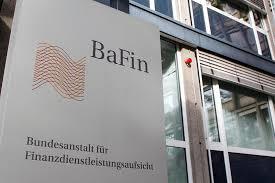The unwillingness of pension funds to use hedge funds within their overall strategy may be subsiding. Searching for alternative investments has become, in many cases, an urgent quest by institutional investors worried about the erosion of capital suffered since early 2000.
Dean Johnson, investment executive at the Cable & Wireless Superannuation Fund in the UK, agrees there is a lot of reluctance among pension fund managers to incorporate hedge fund holdings as part of their investment strategy. “There’s a lot of fear, worries_about the lack of transparency… there’s just not enough experience with them,” he says.
The C&W fund, however, does use hedge funds within its alternative investment/absolute return allocation. “We used to have a private equity allocation, and we took the decision that we would look at hedge funds too,” he says.
“It’s a proxy for a US equity manager,” he says. The C&W fund invests in a fund run by Aaronson & Sons, Philadelphia, opting for long-short and market-neutral strategies.
C&W chose the hedge fund route because it could not find the kind of portfolio – long-only – it was looking for. “It was a pragmatic solution to the benchmark problem we had,” says Johnson. “We were looking for a fairly high-octane manager to invest in the S&P 500. Hedge funds offer bespoke solutions, and give some diversification in absolute return,” he says.
But hedge funds, for all their advantages, are costly, says Johnson. Taking the fund of funds route, an investor has not only research fees to pay, but also fund of fund manager fees and built into this are the fees of the many individual hedge fund managers. “So it is an expensive way to invest,” he says.
Jacob Schmidt, director of hedge fund research at Allenbridge HedgeInfo, says that in the UK there is a lot of interest among pension fund managers in hedge funds. But despite the attention, there is hardly any actual investment in the funds, he says. In Germany and France, on the other hand, and particularly in Switzerland, there is more use of the vehicles. However, these pension fund markets are far smaller than the UK, he notes.
In Germany, says Schmidt, there is a significant bond market culture. This investment background can make certain hedge fund strategies more readily comprehensible. “In particular, market-neutral, arbitrage fund of funds are intellectually much easier for them to understand than they are for traditional equity investors,” he says.
However, not all hedge fund investment is explicit. There are many different ways in which pension funds gain exposure to hedge funds, and there are various ways in which they express the fact that they are using hedge funds. Some funds will simply use the term ‘alternative investment’ to describe their hedge fund involvement.
Vehicles used to gain access to hedge fund returns vary. In Germany, for example, investors are able to buy ‘Schuldscheine’ – “this is just a wrapper, a loan agreement,” says Schmidt. “But a Schuldschein can be linked to an index or a single stock. The question is, are they interested in the underlying – yes, because it might help with their asset liability balance.”
The instrument used to gain hedge fund exposure generally depends on the sophistication of the investor, says Schmidt. The most cautious way to enter the sector is with a capital protected note, moving up to a fund of funds, and the bravest investors would buy directly into a single hedge fund, he says.
Schmidt acknowledges that many critics of the hedge fund industry say these funds are not transparent enough. However, he argues that transparency can, in some cases, be misleading.
”Does transparency mean that I show you everything? Or that I show you the risk in terms of ratios or other methods? It has to do with the understanding of the investor,” he says. The investor might not be able to interpret all the information given, he says. “As consultants, we want to see the individual positions of a_fund, but that might not be workable for every investor.
“A hedge fund wouldn’t tell you all their secrets... They might not be happy to disclose it because that is their expertise.” It is more important for the investor to see whatever the details of individual transactions within the fund, that there is a robust risk management system at work within that fund, Schmidt says.
He cites fund management group Gartmore, which he says has become a benchmark in hedge funds. The AlphaGen Capella hedge fund – a long-short pan-European fund launched in November 1999 – is managed by Roger Guy. But alongside Guy works risk manager Douglas Shaw. He does not make investment choices, but monitors risk, tracking the volatility of the fund.
If there were massive peaks or troughs, a Gartmore spokeswoman says, Shaw would consult with Guy, therefore keeping the risk levels within certain parameters.
“The Gartmore model has become very attractive, and other groups have begun to replicate that, such as Threadneedle and BGI,” says Schmidt.
When the City of Zurich pension fund included hedge fund exposure within its overall asset allocation, it was not looking for dramatic additional returns, says Armin Braun, chief investment officer.
“We just wanted to reduce risk return ratios by means of low correlations,” he says. Although the original decision was taken in 1998 to dedicate 2.5% of the portfolio to the area, the fund was not fully invested until the beginning of 2000, says Braun.
“We work with a specialist hedge fund consultant and invest in five different strategies, which is designed to give us a return between bonds and stocks. A correlation of below 0.6 is what we are expecting and so far, we have been below this.”
The mandates, including those for funds of funds are specialised, he says. “We are currently in seven vehicles.”
Braun describes the fund’s experience last year with hedge funds as “perfect”; hedge funds have been the best main asset category. “So far this year, still positive, if not so good as 2001,” he says.
The City of Zurich pension fund’s hedge fund portfolio is very closely monitored, and this requires transparency about the activity both at the individual fund level as well as at the fund of funds level, says Braun.
“Through these arrangements we are invested in over 90 hedge funds.” The new strategy of the Swiss pension fund is to invest 5% in these funds.
In Finland, the OKO Bank pension fund is considering creating its own fund of funds. “We are still in the planning phase of setting up our own fund of hedge funds
but no formal decision has been made yet,” says Matti Kuhakoski of the Finnish pension fund.
He says the fund’s involvement in hedge funds so far has yielded positive results. “We have invested into hedge funds for a few years. The risk/return/correlation profile has been better than we expected so far.” Now, he says, the fund is even planning to increase its asset allocation to hedge funds slightly.
It is important to spread risk with any investment, and this applies to hedge fund investment as well. “However one invests into hedge fund one needs to be enough diversified and have a strategy for the overall portfolio,” says Kuhakoski.
PFS Pension Fund Services, a company founded by the pension funds of the former Swissair, manages several pension funds with a total asset base of roughly E5bn. “Some of these pension plans have invested in a portfolio of hedge funds for three years,” says Reto Kuhn of PFS.
“This hedge fund portfolio consists of roughly 20 hedge funds that have been selected by Unigestion in Geneva,” he says. A few months ago PFS decided to transfer the whole of that hedge fund portfolio into a Swiss Investment Fund – the PFS Alternative Defensive Strategy Fund. The new fund was set up by PFS and Unigestion for this purpose, says Kuhn.
PFS Alternative Defensive Strategy Fund is an umbrella fund consisting of multiple sub-funds. Each of these sub-funds is a fund of funds that invests in hedge funds or alternative investments.
The portfolio is made up of 14 different strategies as well as cash. But broadly, the portfolio holds around 30.7% in global macro discretionary, 27.7% in arbitrage and 26.8% in non-correlated strategies.
So far the portfolio has returned an annual average of 12.76%, against an average of –16.15% for the S&P500.
Investors who take a bearish view of the long-term prospects for equities globally are likely to look at hedge funds with increasing interest. “Most of the investment community still believe we’ll see the FTSE at 7,000,” says Schmidt of Allenbridge HedgeInfo. “I’m not quite sure this is the case.”




























No comments yet